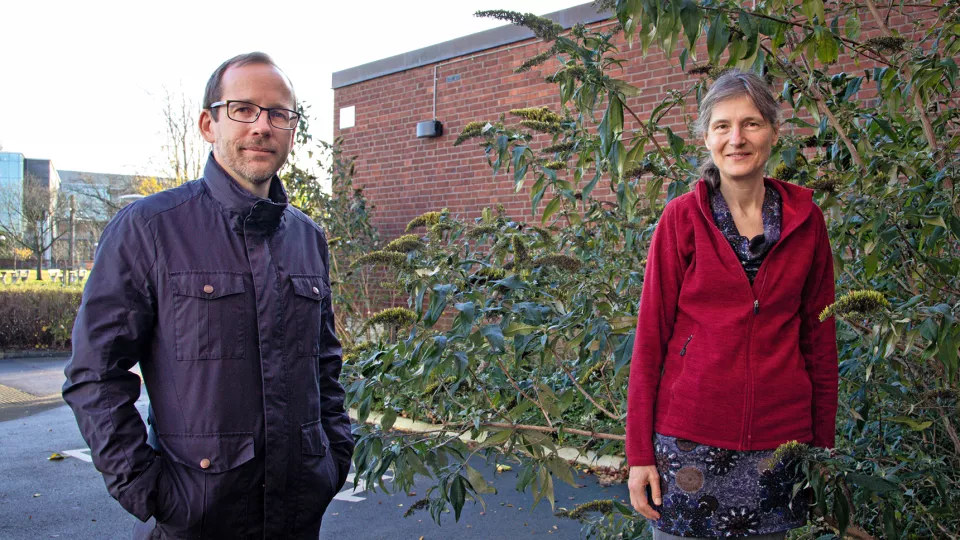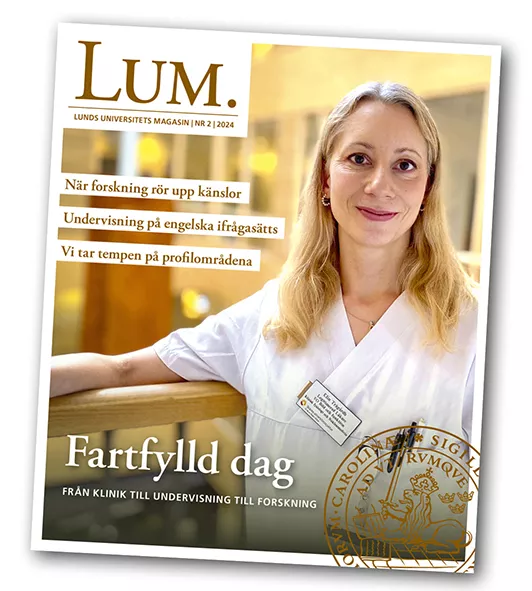It is one of those unusually clear mornings in late November, when the sun is not having to battle through layers of steel-grey cloud. Waiting at the entrance to Kemicentrum is Sara Linse, professor of biochemistry and structural biology, joined a few minutes later by Oskar Hansson, professor of clinical memory research, who pulls up on his bike.
Excellent researchers
It is beyond question that these two are authorities in their respective fields. They recently published an article in the scientific journal Nature Structural & Molecular Biology concerning a new method for measuring the effect of various promising medicines to treat Alzheimer’s, and the day before the interview came word that Sara Linse and Oskar Hansson – two of three researchers from Lund – had been designated “Highly cited researcher 2020” by the Web of Science group.
“It shows that our University is strong in this field. As a doctor, I think it’s particularly exciting for all of our Alzheimer’s patients in the region. And of course I also hope that we can develop this further so that we produce even stronger research”, notes Hansson.
“A few years ago we published a trailblazing discovery that many other research teams around the world picked up on and continued to investigate. This distinction shows that our research is important and interesting”, adds Linse.
Good methods for an early diagnosis
Around 160,000 Swedes are currently suffering from Alzheimer’s disease, with 25,000 people getting a diagnosis every year. However, this form of dementia has historically been hard to diagnose – something that Hansson’s research wants to change. Together with his research team, he has produced a CSF analysis that has yielded good results.
“We have also researched camera methods that enable us to visualise Alzheimer’s in the brain, and last summer we were able to measure substances in the blood for the first time. So from the diagnostic point of view, we currently have methods that are 90 percent certain”, he notes.
A drug that can slow the disease may be available next year
Not as much has been achieved in terms of treatments, although there have recently been breakthroughs in that area too. In their latest study, Hansson and Linse found a drug candidate that prevents the formation of the substance known as amyloid beta – the tiny, incorrectly folded protein clusters that build up in the brain and contribute to Alzheimer’s. The specific drug, aducanumab, is currently being assessed by the US Food and Drug Administration and a decision is expected in a few months, meaning a drug that can slow the disease could hopefully be available on the market as soon as next year.
“This is a very exciting field to be researching, as it is a disease that afflicts so many people. It is usually quoted that around 50 million people in the world have Alzheimer’s. I don’t believe there is any other disease that is so widespread and for which there is no real treatment”, notes Linse.
There are currently two different kinds of medicine that are typically given to Alzheimer’s patients. The first increases a signalling substance in the brain, something that can enhance attentiveness and memory. The other affects a signal receptor in the brain. They are often used together, but only have a modest effect according to Hansson.
“They are often referred to as drugs that slow the disease, but this is incorrect – they only serve to ease symptoms. The drugs that are being researched now do not offer a cure either, but they do slow the disease. And that is a first step”, adds Hansson.
A hopeful outlook
More and more funds are now being earmarked for Alzheimer’s research in the US and UK – something that will benefit the whole world. The overall societal cost of this form of dementia is usually estimated at around one percent of the global economy. A new drug that slows the disease could change the playing field entirely. Both Hansson and Linse have a hopeful outlook.
“In ten years, Oskar’s methods to diagnose everyone will be in place and I have succeeded in pinpointing a small molecule that can be used to develop a drug to slow the disease. We don’t need to entirely eliminate Alzheimer’s – just delaying its progress will be sufficient”, notes Linse.
“If we were to delay its incidence by five years, we would be able to erase 50 percent of cases. If we were to delay by ten years, we would erase 95 percent of cases as most people fall ill later in life”, explains Hansson.
Related reading: When memory fails




